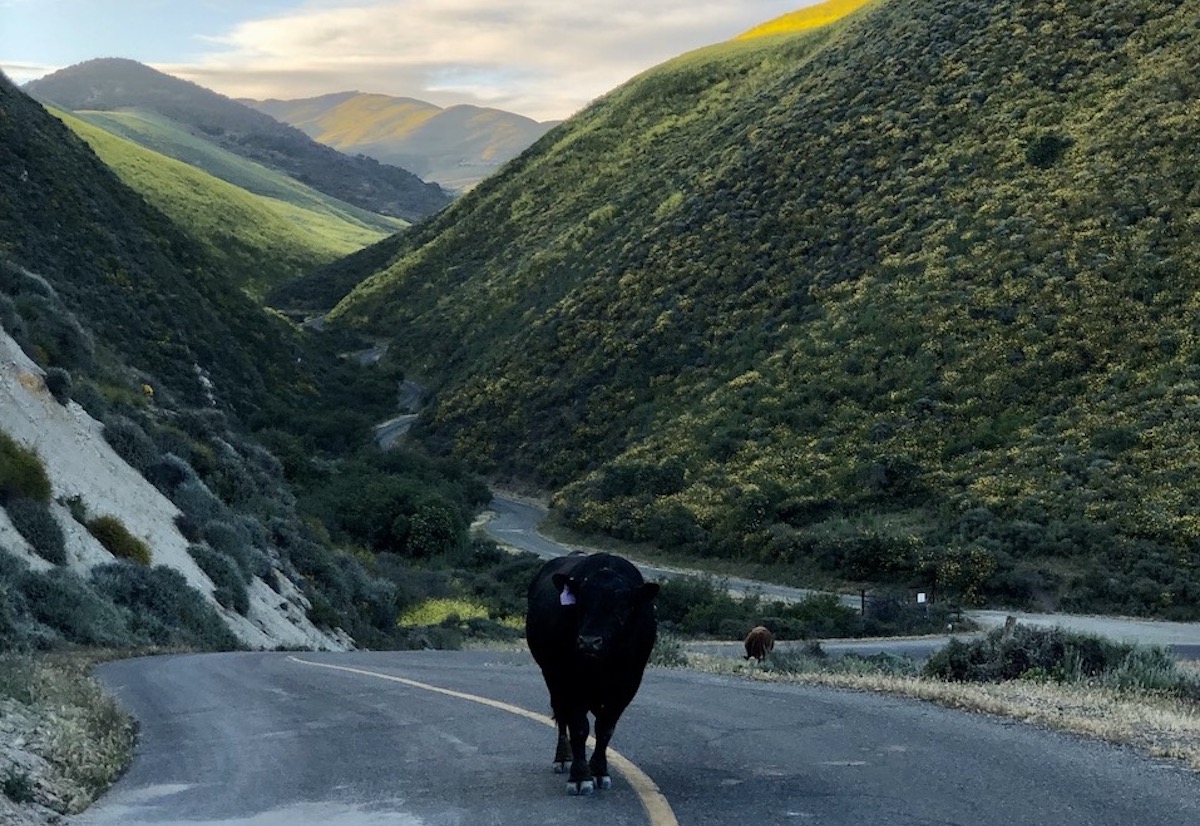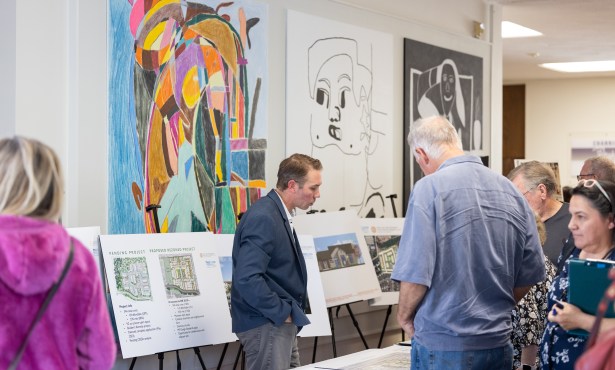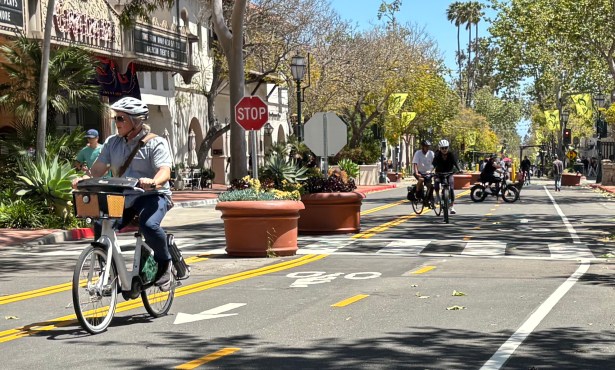When A Thing Is [Not] Right
Hollister Ranch Access Plan: Incomplete and Unrealistic

‘A thing is right when it tends to preserve the integrity, stability and beauty of the biotic community. It is wrong when it tends otherwise.’ —Aldo Leopold
I have been an active and concerned Gaviota community member, local middle school teacher, and Hollister Ranch resident for decades. (I also have a master’s degree in public administration and professional experience with program implementation, public engagement, and consensus building.) The recently released Hollister Ranch Public Access Plan under consideration by the California Coastal Commission is a misguided charade with potentially grievous consequences. I have seen this process through several incarnations over the years, and the only thing new in this go-around is that the state finally acknowledges that there are significant constraints — but it fails to offer any solutions.
At its onset, the document refers to the 60-mile section of the Santa Barbara coast from Hollister Ranch to Point Sal as one of the least accessible shorelines in California, failing to mention that this stretch also includes the inaccessible Dangermond Preserve and Vandenberg Air Force Base, and focusing exclusively on the 8.5 miles that skirt the Hollister Ranch. In fact, the Gaviota Coast is 76 miles, from Goleta to Point Sal, and other than limited beach access at El Cap, Refugio, Gaviota, Jalama, and Surf Beach, none of the other beach areas are accessible or subject to the relentless focus directed toward Hollister Ranch, and many are closer to public roads, facilities, and population centers.
Former Mexican land grant ranches such as Hollister have for more than 150 years steadfastly resisted the urbanization that characterizes the rest of the southern California coast, with cattle grazing still the primary use of the land — and let’s take a moment to contemplate how serendipitous that turned out to be. Highway 101 diverts north away from the coast at Gaviota a couple of miles from the Ranch boundary, and there is no public road near or reaching the coast until Jalama, more than 20 miles to the west. The coastline between is nothing like that seen along the freeway. The terrain is far more rugged, which is why a public roadway was never built there, and the only land access is via a single private ranch road, not built to public road standards. It is narrow and winding, with tight curves, blind corners, and many grades in excess of 20 percent. Much of the area has no utility services of any kind.
If the state wishes to make easier coastal access here a priority, it has the power to do so by condemning trail or road easements, paying for the property and loss of privacy, and paying for and providing the facilities, infrastructure, and management for this type of access. Where is the plan for covering these daunting costs? And where is the assessment of environmental impacts? More important, should this even be the state’s priority? With so many crucial and competing demands and shortfalls, is this really where the citizens of California want to direct resources and effort? It’s an interesting case of role reversal: the California Coastal Commission is the entity advocating big, expensive development here, while we who know and love this place are fighting to protect a precious and irreplaceable environment.
The plan declares its goal to be public access, when what is really being sought is convenient access. (In one inadvertently humorous section, a shuttle is deemed necessary for people who would otherwise find it “physically challenging, unappealing, or inaccessible” to get to a beach like San Augustine, at the west end of the Ranch. The very word “unappealing” is quite telling. And is it a human right that access to all the wonders of the natural world be effortless? Or that it justifies traversing privately owned and carefully stewarded properties?)
Surfers, hikers, and boaters have long enjoyed access to the Ranch beaches, which are indeed public; many appreciate the natural barriers of tide and terrain, which inhibit crowding, and that’s partly why the place is still so special. To be sure, the boat launch at Gaviota was helpful too, but when the State Park introduced a plan to rebuild it, that plan was rejected by the Coastal Commission, and the pier has remained broken since a storm slammed into it in 2014. Meanwhile, Gaviota, Refugio, and El Capitan state beaches are perpetually underfunded and often difficult to patrol and maintain, and the County struggles to operate and maintain its own beach park at Jalama.
In the decades since 1982, and more recently in the aftermath of a workshop that yielded “hundreds of comments, concerns, and strategies,” which were later distilled quite selectively, we are looking at a document that integrates no new ideas or solutions. Forty years. What does that tell us about the integrity of this process and the validity of the stated goals? In the commission’s own words: “The relatively undeveloped landscape and ruggedness of the coastline, the high quality of the natural environment, surf conditions, and the lack of crowds are all aspects that make the Hollister beach experience special.” But the proposal is in direct conflict with all that it declares to be special.
In Vision and Objectives, for example, we see again the stated desire that there be “lack of crowds.” Actual Hollister Ranch usage numbers fall well below the numbers advocated here. How can the state reconcile this contradiction? Implementation of this plan would undeniably lead to a completely different experience and environment. The very elements that environmentalists cherish, such as pristine tidepools and many species of threatened flora and fauna, have been protected by the limited use of these beaches, and would be diminished and destroyed by the numbers of additional visitors, vehicles, and infrastructure this plan is recommending. Costs and revenue sources are unclear, and impacts have not been assessed. Based upon my own experience in public administration, I can tell you that to launch this as a “pilot” or experimental program in April, with so many loose ends unexamined, is foolish. It’s not so easy to backtrack, and the harm will be irrevocable.
And what of the need to take private property to achieve this? How is that going to be accomplished, especially when the premise is to demonize ranch owners? Contrary to absurd stereotypes propagated by some who like to tell tales, the prevailing ownership does not see this land as a personal playground or exclusive real estate; we are concerned about its fate far beyond our individual life spans. Evidence? Many of the activities “envisioned” are already being done, and have been for many years: environmental education, scientific studies, organized visits by persons with disabilities, the beloved Tide Pool School.
The Hollister Ranch has been responsible and forward-thinking in offering such programs, and its residents tend to believe that people value the natural environment more when they understand it. We also believe that once a place is gone, it is gone forever, so please understand our reluctance to accept this deeply flawed, incomplete, and misguided proposal. More evidence? The place exists. It continues to shimmer, unlikely and amazing, despite the clamor and unrestrained development all around it.
If I were to summarize my fundamental issue with this plan, it is this: concerns are listed, but not addressed. It is infused with optimism bias, denial, and a strange kind of obsession, and it solves nothing. If I were a teacher … and I was … I’d send it back with questions and mark it incomplete. If I were a public administrator … and I was … I’d be alarmed by the lack of realistic analysis and integration of the knowledge-based input and facts from 40 years of study and citizen participation.
An undertaking on this scale has got to be more than just a notch in someone’s belt or a political performance. Alas, there is something disturbingly single-minded and vindictive about this thing, and I admit to a sense of weariness, déjà vu, and disillusionment, but I still feel it is imperative to speak out.
Those of us who oppose it are neither heroes nor the rich pig enemies of the masses. We simply care, with all our hearts, and we believe that the state is greatly underestimating what is at risk here.



